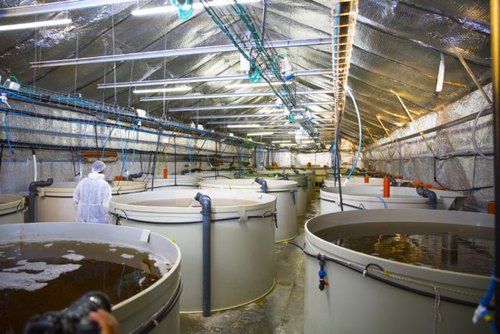
Recirculatory Aquaculture System (RAS) is a technology where water is recycled and reused after mechanical and biological filtration and removal of suspended matter and metabolites. This method is used for high- density culture of various species of fish, utilizing minimum land area and water.It is an intensive high density fish culture unlike other aquaculture production systems. Instead of the traditional method of growing fish outdoors in open ponds and raceways, in this system fish are typically reared in indoor/outdoor tanks in a controlled environment. Recirculating systems filter and clean the water by recycling it back to fish culture tanks. The technology is based on the use of mechanical and biological filters and the method can be used for any species grown in aquaculture. New water is added to the tanks only to make up for splash out, evaporation and that used to flush out waste materials. The reconditioned water circulates through the system and not more than 10% of the total water volume of the system is replaced daily. In order to compete economically and to efficiently use the substantial capital investment in the recirculation system, the fish farmer needs to grow as much fish as possible in the inbuilt capacity. The management of recirculating systems relies heavily on the quantity and quality of feed and the type of filtration. Numerous filter designs are used in recirculating systems, but the overall goal of all filtration is to remove metabolic wastes, excess nutrients, and solids from the water and provide good water quality for the aquatic organisms. It is important to consider all factors when designing and investing in aquaculture systems.
However, in order to encourage small-scale fish farmers and entrepreneurs and also to facilitate fish production in urban and semi-urban areas where land and water are scarce, it is proposed to promote Backyard Recirculation Aquaculture Systems.